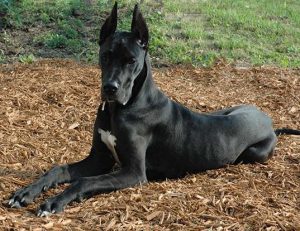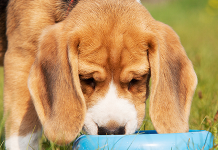Great Dane Lifespan: How Long Do Great Danes Live?
Great Danes are majestic and gentle giants known for their imposing size and calm demeanor. As a large breed, they capture the attention and admiration of many dog lovers. However, potential Great Dane owners often have questions about their lifespan and how to ensure their dogs live long, healthy lives. In this discussion, we will explore the average lifespan of Great Danes, factors that can influence their longevity, common health concerns, and practical tips for keeping Great Danes healthy throughout their lives. By understanding their specific needs and taking proactive measures, you can provide the best care for your Great Dane and potentially extend their lifespan.
How Long Do Great Danes Live?
Compared to other large breeds, Great Danes suffer a raw deal when it comes to lifespan. The Great Dane lifespan is eight to 10 years but may be as short as six or seven years. Rarely, some live up to 12 years.
While elephants and whales are extremely large animals, they are among the longest-living species in the natural world, So, why are dogs so different? Does their giant size effect how long a Great Dane lives? How long do Great Danes live if provided with every advantage? Read on to find out how to provide the best life for your Great Dane.

Factors That Affect Great Dane Lifespan
Several factors can influence the lifespan of a Great Dane:
Genetics: Genetics play a significant role in a dog’s lifespan. Great Danes with a genetic predisposition to certain health conditions may have a shorter lifespan. Responsible breeding practices that focus on minimizing hereditary health issues can help improve the overall lifespan of the breed.
Nutrition: A balanced and appropriate diet is crucial for the overall health and longevity of any dog. Providing high-quality dog food that meets the nutritional requirements of Great Danes, in consultation with a veterinarian, can help promote their well-being and potentially extend their lifespan.
Exercise and activity level: Regular exercise is essential for maintaining a healthy weight, muscle tone, and cardiovascular health. Adequate physical activity, including walks, playtime, and mental stimulation, can contribute to a longer and healthier life for Great Danes.
Veterinary care: Routine veterinary check-ups, vaccinations, and preventive care, such as parasite control and dental hygiene, are essential for detecting and addressing any health issues early on. Regular veterinary care helps ensure that any potential health concerns are addressed promptly, potentially prolonging the dog’s lifespan.
Environmental factors: The environment in which a Great Dane lives can impact its overall health and lifespan. A safe, clean, and stress-free environment, with proper shelter and protection from extreme temperatures, can contribute to a longer and healthier life.
Breed-specific health conditions: Great Danes are prone to certain health conditions, such as hip dysplasia, bloat (gastric dilatation-volvulus), heart problems, and certain types of cancer. Being aware of these breed-specific health concerns and taking appropriate preventive measures, including regular health screenings, can help manage these conditions and potentially extend the dog’s lifespan.
It’s important to note that while these factors can influence a Great Dane’s lifespan, individual variations exist, and no guarantee can be made regarding the lifespan of any specific dog. Providing a loving and caring environment, coupled with appropriate health care, can help maximize the lifespan and well-being of your Great Dane.
Life Stages Of A Great Dane
The life stages of a Great Dane can be divided into the following general categories:
Puppy stage (0-6 months): This stage begins from birth until around six months of age. Great Dane puppies experience rapid growth during this period and require proper nutrition, socialization, and training. They are curious, energetic, and are learning important behaviors and skills.
Adolescent stage (6 months – 2 years): This stage is marked by continued growth, both physically and mentally. Great Dane adolescents are still developing and may be energetic and playful. Training and socialization should continue during this time to shape their behavior and ensure they grow into well-mannered adults.
Adult stage (2-6 years): Great Danes reach their full size and physical maturity during this stage. They have settled into their adult temperament and behavior patterns. Adult Great Danes generally have a calmer demeanor compared to their younger years. They still require regular exercise, mental stimulation, and continued veterinary care to maintain their health.
Senior stage (6 years and older): Great Danes are considered seniors around the age of six. This stage can vary depending on the individual dog’s health and genetics. Older Great Danes may experience a decline in energy levels, mobility, and may be more prone to age-related health conditions. It’s important to provide appropriate care, including regular veterinary check-ups, a balanced diet, exercise tailored to their needs, and comfortable living arrangements.
It’s important to note that the specific timing and progression through these life stages can vary from dog to dog. Factors such as genetics, health, and individual development can influence the rate at which a Great Dane progresses through each stage. Monitoring their health, providing proper care, and adapting their lifestyle as they age can help ensure they have a happy and comfortable life throughout all stages.
Great Dane Lifespan: Common Signs Of Aging In Great Danes
As Great Danes age, they may start to exhibit certain signs of aging. While individual dogs may age differently, here are some common signs of aging that Great Dane owners may observe:
Reduced energy and activity levels: Older Great Danes tend to have lower energy levels and may become less active. They may prefer shorter walks or play sessions and spend more time resting or sleeping.
Joint stiffness and mobility issues: Great Danes are prone to conditions such as hip dysplasia and arthritis, which can become more pronounced as they age. They may show signs of stiffness, difficulty getting up or lying down, and may be less willing or able to engage in physical activities.
Weight gain or loss: Older Great Danes may experience changes in their weight. Some dogs may struggle with weight gain due to reduced activity levels, while others may experience weight loss due to dental problems, reduced appetite, or other health issues. Regular monitoring of their weight and adjusting their diet accordingly is important.
Changes in vision and hearing: Like many dogs, Great Danes may experience a decline in their vision and hearing as they age. They may develop cataracts, cloudy eyes, or have trouble seeing in low light. Their response to auditory cues may also become less sharp.
Dental issues: Dental health problems, such as gum disease and tooth decay, become more common in aging Great Danes. Bad breath, difficulty eating, or changes in chewing habits may indicate dental issues. Regular dental care, including professional cleanings and dental hygiene practices at home, can help maintain their oral health.
Changes in behavior: Older Great Danes may show changes in behavior and temperament. They may become less interested in play, be more irritable, or seek more comfort and attention from their owners. Some dogs may also develop anxiety or cognitive decline (doggie dementia) as they age.
Increased susceptibility to health conditions: Great Danes may be prone to certain age-related health conditions, including heart disease, cancer, and bloat (gastric dilatation-volvulus). Regular veterinary check-ups and early detection of any health issues are crucial to manage these conditions effectively.
It’s important to note that while these signs can be indicative of aging, they can also be symptoms of underlying health problems. If you notice any significant changes in your Great Dane’s behavior, appetite, mobility, or overall well-being, it’s advisable to consult with a veterinarian for a proper evaluation and guidance.
Extending The Lifespan Of A Great Dane
While the lifespan of a Great Dane is influenced by various factors, there are steps you can take to help extend their lifespan and improve their overall health and well-being:
Proper nutrition: Provide a balanced and high-quality diet suitable for Great Danes at all stages of their life. Consult with a veterinarian to determine the appropriate portion sizes and nutritional requirements for your dog. Avoid overfeeding, as obesity can lead to various health issues.
Regular exercise: Great Danes need regular exercise to maintain a healthy weight, muscle tone, and cardiovascular health. However, it’s important to avoid excessive exercise during their growth period to protect their developing bones and joints. Consult with a veterinarian to determine the right amount and type of exercise for your Great Dane based on their age, health, and individual needs.
Veterinary care: Schedule regular check-ups with a veterinarian to monitor your Great Dane’s health, detect any potential issues early on, and ensure they receive necessary vaccinations and preventive treatments. Follow recommended vaccination schedules and keep up with parasite prevention (fleas, ticks, heartworm, etc.).
Dental care: Dental health is crucial for overall well-being. Establish a dental hygiene routine for your Great Dane, including regular tooth brushing and providing appropriate chew toys or dental treats. Regular professional dental cleanings may also be necessary.
Weight management: Keep your Great Dane at a healthy weight to reduce the risk of obesity-related health issues. Monitor their food intake, provide portion-controlled meals, and avoid excessive treats or table scraps. Consult with a veterinarian to determine the optimal weight for your dog.
Mental stimulation: Engage your Great Dane’s mind with interactive toys, puzzles, and training exercises. Mental stimulation helps keep them mentally sharp and can prevent boredom-related behaviors.
Stress reduction: Minimize stressors in your Great Dane’s environment. Provide a calm and secure living space, ensure they have a comfortable bed, and consider using anxiety-reducing measures during stressful situations (e.g., thunderstorms, fireworks).
Genetic health testing: When considering getting a Great Dane puppy, choose a reputable breeder who conducts genetic health testing on their breeding dogs to reduce the risk of inherited health conditions.
Environmental safety: Create a safe environment for your Great Dane by removing potential hazards, securing fencing, and preventing access to toxic substances or dangerous objects.
Emotional well-being: Provide plenty of love, attention, and socialization for your Great Dane. Dogs that have strong bonds with their owners and receive proper socialization tend to have better overall health and well-being.
Remember that each Great Dane is an individual, and their needs may vary. Regular communication with your veterinarian and providing a loving and attentive environment will go a long way in promoting a longer and healthier life for your Great Dane.
What Health Problems Do Great Danes Have?
Great Danes, like many large and giant dog breeds, are prone to certain health problems. While not all Great Danes will experience these issues, being aware of them can help you take proactive measures to manage and prevent them. Some common health problems in Great Danes include:
Hip Dysplasia: This is a common inherited condition where the hip joint doesn’t develop properly, causing the femur (thigh bone) to fit poorly into the hip socket. It can result in discomfort, pain, lameness, and arthritis.
Dilated Cardiomyopathy (DCM): Great Danes have a higher risk of developing DCM, a condition that affects the heart muscle, causing it to weaken and enlarge. Symptoms include exercise intolerance, coughing, difficulty breathing, and fainting.
Gastric Dilatation-Volvulus (GDV) or Bloat: This is a life-threatening condition in which the stomach twists and becomes distended with gas. GDV requires immediate veterinary attention. Symptoms include unproductive retching, abdominal bloating, restlessness, and signs of distress.
Hypothyroidism: Great Danes may develop an underactive thyroid gland, leading to symptoms such as weight gain, lethargy, hair loss, and skin issues.
Osteosarcoma: This is a type of bone cancer that occurs more frequently in large and giant breeds like Great Danes. Signs can include lameness, swelling, and pain in the affected limb.
Wobbler Syndrome: Great Danes can be prone to a condition called cervical spondylomyelopathy or “wobbler syndrome.” It involves compression or instability of the spinal cord in the neck, leading to coordination issues, weakness, and difficulty walking.
Progressive Retinal Atrophy (PRA): PRA is an inherited degenerative eye disease that causes gradual vision loss and can lead to blindness.
Hypertrophic Osteodystrophy (HOD): This condition primarily affects growing Great Dane puppies and causes inflammation and pain in the bones, often in the legs. Symptoms include lameness, fever, and reluctance to move.
Von Willebrand’s Disease (VWD): Great Danes are among the breeds prone to this inherited bleeding disorder, which affects the blood’s ability to clot properly.
It’s important to note that not all Great Danes will experience these health problems, and responsible breeding practices can help reduce the risk. Regular veterinary check-ups, appropriate health screenings, a balanced diet, and a healthy lifestyle can help manage and mitigate these conditions. When considering getting a Great Dane puppy, it’s essential to choose a reputable breeder who conducts health screenings on their breeding dogs and prioritizes the overall health of the breed.
How To Keep Your Great Dane Healthy?
To keep your Great Dane healthy, consider the following guidelines:
Balanced Diet: Provide a high-quality, balanced diet that meets the nutritional needs of Great Danes. Consult with a veterinarian to determine the appropriate type and amount of food based on your dog’s age, weight, and activity level. Avoid overfeeding to prevent obesity.
Regular Exercise: Great Danes need regular exercise to maintain a healthy weight, promote muscle tone, and prevent boredom. Engage in daily walks, play sessions, or other activities suitable for their age and physical abilities. However, be cautious during their growth period to avoid excessive exercise that can strain their developing bones and joints.
Veterinary Care: Schedule regular check-ups with a veterinarian to monitor your Great Dane’s overall health, detect any potential issues early on, and keep up with vaccinations and preventive treatments. Follow the recommended vaccination schedule and consult with a veterinarian about appropriate flea, tick, and heartworm prevention.
Dental Care: Maintain good dental hygiene to prevent dental problems. Brush your Great Dane’s teeth regularly using a dog-friendly toothbrush and toothpaste. Provide dental treats or toys that promote chewing and help reduce tartar buildup. Regular professional dental cleanings may also be necessary.
Weight Management: Keep your Great Dane at a healthy weight to prevent obesity-related health issues. Monitor their food intake, avoid excessive treats, and provide portion-controlled meals. Adjust their diet as they age or if their activity level changes.
Mental Stimulation: Engage your Great Dane’s mind with interactive toys, puzzle games, and training exercises. Mental stimulation helps prevent boredom and keeps their mind sharp.
Socialization and Training: Properly socialize your Great Dane from a young age, exposing them to various people, animals, and environments. Enroll them in obedience training classes to ensure they become well-mannered and obedient companions.
Safe Environment: Create a safe living environment for your Great Dane. Remove potential hazards, secure fencing to prevent escapes, and keep harmful substances out of their reach. Provide a comfortable and clean sleeping area.
Grooming: Regularly groom your Great Dane to maintain their coat and skin health. Brush them to remove loose hair and debris, clean their ears, trim their nails, and bathe them as needed.
Emotional Well-being: Provide plenty of love, attention, and companionship to your Great Dane. They are social animals and thrive with regular human interaction and positive reinforcement.
Remember, each Great Dane is an individual, and their needs may vary. Regular communication with your veterinarian, observant care, and a loving environment will help ensure the health and well-being of your Great Dane.
Great Dane Lifespan: Frequently Asked Questions
Q: What is the average lifespan of a Great Dane?
A: Great Danes typically have a lifespan of around 6 to 8 years. However, individual dogs may vary, and some Great Danes may live longer or shorter lives depending on various factors such as genetics, overall health, diet, exercise, and veterinary care.
Q: Can a Great Dane live longer than 8 years?
A: While the average lifespan of a Great Dane is around 6 to 8 years, some Great Danes have been known to live beyond 8 years. With proper care, nutrition, exercise, and regular veterinary check-ups, it is possible to extend a Great Dane’s lifespan beyond the average.
Q: Why do Great Danes have a relatively short lifespan?
A: The shorter lifespan of Great Danes is primarily attributed to their large size. Larger dog breeds tend to have shorter lifespans compared to smaller breeds. Additionally, Great Danes are prone to certain health issues, such as hip dysplasia, heart problems, and bloat, which can affect their overall longevity.
Q: How can I help my Great Dane live a longer life?
A: To help extend the lifespan of your Great Dane, you can focus on providing proper nutrition, regular exercise, veterinary care, dental hygiene, weight management, mental stimulation, and a safe and loving environment. Additionally, responsible breeding practices and genetic health testing can help reduce the risk of inherited health conditions.
Q: Are there any specific health concerns I should be aware of for Great Danes?
A: Yes, Great Danes are prone to certain health problems such as hip dysplasia, dilated cardiomyopathy (DCM), bloat (gastric dilatation-volvulus), hypothyroidism, osteosarcoma (bone cancer), wobbler syndrome, progressive retinal atrophy (PRA), and von Willebrand’s disease (VWD). Regular veterinary check-ups and early detection can help manage these conditions effectively.
Q: Can a Great Dane’s lifespan be increased through diet and exercise?
A: While proper nutrition and regular exercise are essential for a Great Dane’s overall health and well-being, they cannot guarantee an extended lifespan. However, a balanced diet and regular exercise can contribute to better overall health and potentially minimize the risk of certain health issues, thus positively impacting the dog’s quality of life.
Q: Is the lifespan of a Great Dane affected by its size?
A: Yes, the size of a Great Dane can have an impact on its lifespan. Larger dog breeds tend to have shorter lifespans compared to smaller breeds. The rapid growth and the strain on the body that comes with the large size of Great Danes can contribute to certain health issues and potentially affect their lifespan.
Q: How important is genetic health testing for Great Danes?
A: Genetic health testing is crucial for Great Danes to help identify potential inherited health conditions. Responsible breeders conduct genetic health testing on their breeding dogs to reduce the risk of passing on genetic diseases to offspring. It is recommended to choose a reputable breeder who prioritizes the overall health of the breed and conducts appropriate health screenings.
Conclusion
In conclusion, Great Danes typically have a lifespan of around 6 to 8 years, although individual dogs may vary. Several factors can influence a Great Dane’s lifespan, including genetics, nutrition, exercise, veterinary care, environmental factors, and breed-specific health conditions. By providing proper care, including a balanced diet, regular exercise, veterinary check-ups, dental care, weight management, mental stimulation, and a safe environment, you can help promote a longer and healthier life for your Great Dane. Additionally, responsible breeding practices and genetic health testing can help reduce the risk of inherited health conditions. It’s important to stay informed, communicate with your veterinarian, and provide a loving and attentive environment to ensure the well-being and longevity of your Great Dane companion.






